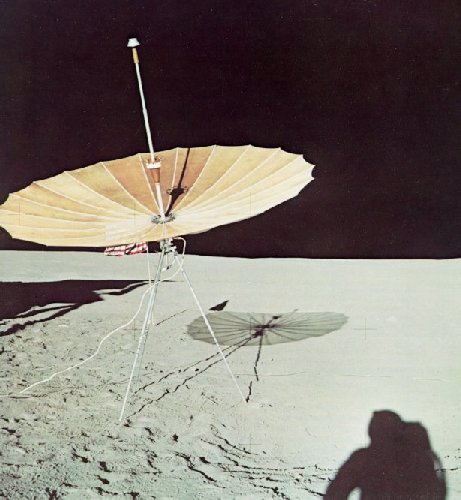















|

|
| Color telecasts, live from the Apollo 14 site, came by way of the erectable S-band antenna shown here. The S-band of radio frequencies (between 1550 and 5200 megahertz) was used for high-data-rate space transmissions. The gold-colored parabolic reflector, which opened just like an umbrella, provided a higher gain than the lunar module's own steerable antenna. Note how featureless the lunar surface appears in the area just above the astronaut's shadow. This illustrates the visibility problem that the astronauts faced in walking down-Sun. |


